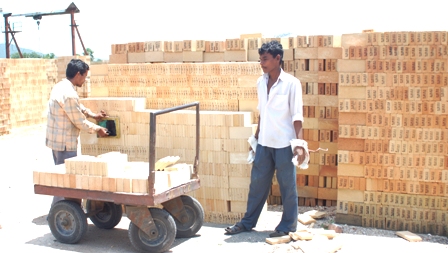5-July-2020
Permeability of any refractory material is defined as the volume of a gas or air which will pass through a cubic centimeter of the material under a pressure of 1 cm of water per second.
Permeability of any refractory material is defined as the volume of a gas or air which will pass through a cubic centimeter of the material under a pressure of 1 cm of water per second.
Fig - Refractory Bricks being stacked in stock yard
Permeability = (Vol. of gas/air x thickness) ÷ (Area x Time of flow x Pressure difference)
It is determined by forcing a known volume air or gas through a cube. Time of flow, pressure difference and dimensions of specimens are noted. However, there are ready-made apparatuses and systems available in the market for testing permeability of refractory bricks and monolithics. There is no direct dependence permeability has on porosity however, permeability depends upon the existence of closed pores or channel pores and is a measure of these, whereas porosity measures the total pore volume including closed pores.
Suggested Article: Pore Size Distribution in Refractories
However, this property permeability for refractory bricks or monolithics become important wherever molten liquid like metal, slag, glass etc. come in contact with the refractory lining i.e. wall of the furnace or container especially, when gas under pressure is present. Due to the anisotropic nature of refractories, the result will depend upon on factors such as the direction of flow and presence or absence of the original skin on the test specimen.
Low permeability is more important than low porosity from the point of view of slag resistance of the refractory. Uniform permeability is an indication of absence of cracks in the refractory.
Related Articles:








